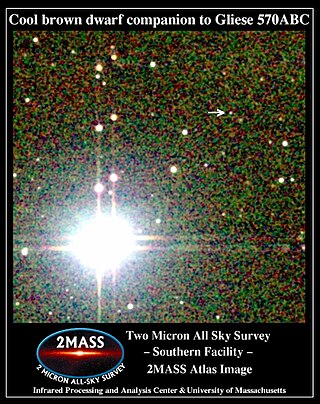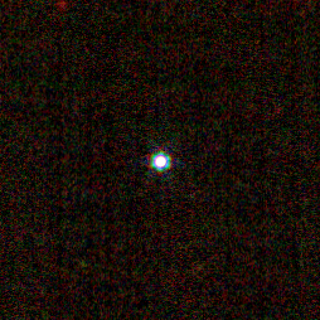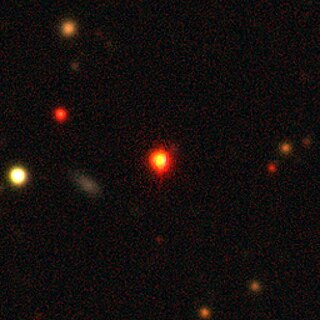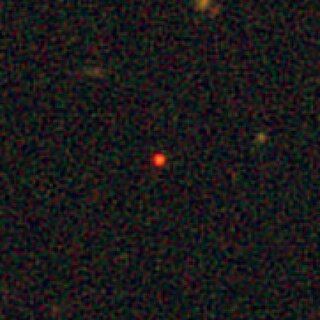
Gliese 570 is a quaternary star system approximately 19 light-years away. The primary star is an orange dwarf star. The other secondary stars are themselves a binary system, two red dwarfs that orbit the primary star. A brown dwarf has been confirmed to be orbiting in the system. In 1998, an extrasolar planet was thought to orbit the primary star, but it was discounted in 2000.

2MASS J05325346+8246465 is possibly the first brown dwarf observed in the galactic halo of the Milky Way, and the first known substellar subdwarf star. It was discovered from Two Micron All-Sky Survey data, and verified by observations at Palomar Observatory and W. M. Keck Observatory. It has a low metallicity, which indicates it is an old star.

DENIS-P J020529.0−115925 is a brown dwarf system in the constellation of Cetus. It is located 64 light-years away, based on the system's parallax. It was first found in the Deep Near Infrared Survey of the Southern Sky.

2MASS J12373919+6526148 is a brown dwarf object with late spectral type T in the constellation of Draco, nearly 34 light-years away from the Sun. The substellar object could likely host a very low-mass companion, possibly in the planetary regime. This has been inferred from unusual Hα emission that it exhibited in the past.
DENIS J081730.0−615520 is a T-type brown dwarf 17 light-years away in the constellation Carina. It was discovered by Etienne Artigau and his colleagues in April 2010. The brown dwarf belongs to the T6 spectral class, with a photosphere temperature of about 1000 K. It has a mass of about 15 MJ or about 1.5% the mass of the Sun.
2MASS J09393548−2448279 is a probable system of two nearby T-type brown dwarfs, located in constellation Antlia at 17.4 light-years from Earth. The two stars orbit at a distance of 0.0928 AU

2MASS J04151954−0935066 is a brown dwarf of spectral class T8, in the constellation Eridanus about 18.6 light-years from Earth. This is a reference (standard) object for the definition of the T8 spectral class.
2MASS J09373487+2931409, or 2MASSI J0937347+293142 is a brown dwarf of spectral class T6, located in the constellation Leo about 19.96 light-years from Earth.

2MASS J00361617+1821104 is a brown dwarf, located in 28.6 light-years from Earth in the constellation Pisces. It was discovered in 2000 by I. Neill Reid et al. Kinematically, it does not belong to any known moving group, been grouped with other "field stars".

2MASS J21392676+0220226 is a brown dwarf located 34 light-years from Earth in the constellation Aquarius. Its surface is thought to be host to a massive storm, resulting in large variability of its color. It is a member of the Carina-Near moving group. This brown dwarf was discovered in the Two Micron All-Sky Survey (2MASS).
2MASS J11145133−2618235, or 2M1114−26, or 2M1114−2618, or 2MASS 1114−26, or 2MASS J1114−2618) is a nearby brown dwarf of spectral class T7.5, located in constellation Hydra at approximately 18 light-years from Earth.
DENIS-P J1228.2-1547 is a system of two nearly equal brown dwarfs, both are of spectral types L5.5:, located in constellation Corvus at approximately 20.2 parsecs or 66.0 light-years from Earth.

GD 165 is a system of a white dwarf and a brown dwarf of spectral types DA4 + L4, located in constellation Boötes at approximately 103 light-years from Earth. GD 165 B remained the only brown dwarf companion of a white dwarf until the discovery of GD 1400 B, which was discovered 17 years later.

2MASS J15031961+2525196 is a nearby brown dwarf of spectral type T5.5, located in the constellation of Boötes at approximately 20.7 light-years from Earth.

2MASS J03552337+1133437 is a nearby brown dwarf of spectral type L5γ, located in constellation Taurus at approximately 29.8 light-years from Earth.

2MASS J22282889–4310262 is a brown dwarf discovered by the Hubble Space Telescope and The Spitzer Space Telescope in 2013. Using Hubble and Spitzer, NASA astronomers were able to develop the most detailed 'weather map' for brown dwarfs, utilizing different wavelengths of infrared light to show changing light patterns and different layers of material in the windstorms. This observation was the first time that researchers were able to probe such variability at different altitudes in a brown dwarf. In the outer layers of its atmosphere, gases condense into raindrop-like particles made up of sand and iron which fall into the interior.
2MASS J12195156+3128497 is a rapidly-rotating brown dwarf of spectral class L8, located in the constellation Coma Berenices about 66 light-years from Earth. With a photometrically measured rotation period of 1.14 hours, it is one of the fastest-rotating known brown dwarfs announced by a team of astronomers led by Megan E. Tannock in March 2021. With a rotational velocity of about 80 km/s (50 mi/s), it is approaching the predicted rotational speed limit beyond which it would break apart due to centripetal forces. As a consequence of its rapid rotation, the brown dwarf is slightly flattened at its poles to a similar degree as Saturn, the most oblate planet in the Solar System. Its rapid rotation may enable strong auroral radio emissions via particle interactions in its magnetic field, as observed in other known rapidly-rotating brown dwarfs.

2MASS J03480772−6022270 is a brown dwarf of spectral class T7, located in the constellation Reticulum approximately 27.2 light-years from the Sun. It was discovered by astronomer Adam Burgasser and collaborators of the 2MASS Wide-Field T Dwarf Search in 2002. With a rotation period of 1.08 hours, it is the fastest-rotating brown dwarf confirmed as of 2022. The rotational velocity at its equator is over 100 km/s (62 mi/s), approaching the predicted rotational speed limit beyond which it would break apart due to centripetal forces. As a consequence of its rapid rotation, the brown dwarf is slightly flattened at its poles to a similar degree as Saturn, the most oblate planet in the Solar System. Its rapid rotation may enable strong auroral radio emissions via charged particle interactions in its magnetic field, as observed in other known rapidly-rotating brown dwarfs.












